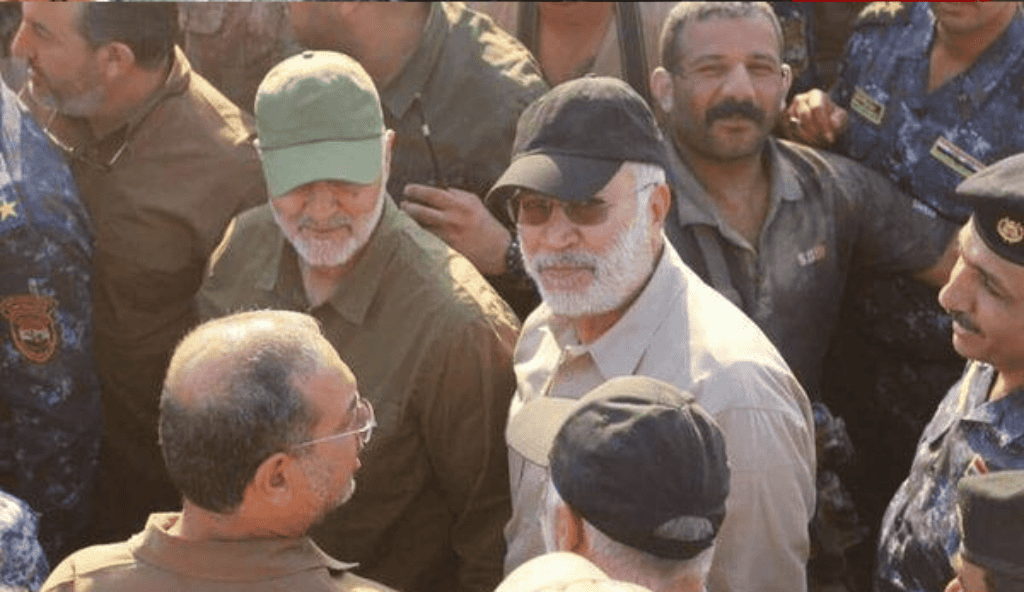
A U.S. drone strike near the Baghdad International Airport has reportedly killed Iranian Islamic Revolutionary Guard Corps (IRGC) – Qods Force commander Qassem Soleimani and Abu Mahdi al Muhandis, the leader of the Hezbollah Brigades and deputy leader of Iraq’s Popular Mobilization Forces (PMF).
Soleimani and Muhandis were terror and insurgency masterminds who were revered in Iran, Iraq, Syria, and beyond for their support of the Iranian-backed Shia militias and terrorist groups that have destabilized several countries in the Middle East.
The impact of the killing of Soleimani and Muhandis is yet to be fully understood. Both men were wildly popular among the anti-U.S. Shiite militias and had extensive ties with Iraqi politicians and military leaders and units. The U.S. currently has more than 5,000 troops in a number of bases throughout the country and its embassy in Baghdad was attacked days ago for a lesser offense.
The U.S. Department of Defense has confirmed the drone strike, adding that Soleimani was indeed the target. The Pentagon’s statement also states that Soleimani “approved the attacks on the U.S. Embassy in Baghdad.”
Other outlets, including Iranian state media and the PMF itself, and many others belonging to Iran’s “Axis of Resistance,” have reported the two figures are dead.
Fars News, Iran’s semi-official outlet affiliated with the IRGC, confirmed the news saying that “Soleimani and Muhandis were killed by an American strike today after a long-day of mourning.” The two were reportedly attending a funeral for killed Hezbollah Brigades fighters.
On its official Twitter page, the PMF has confirmed the death of both Muhandis and Soleimani, adding that they were “killed by a U.S. airstrike on the road from the Baghdad airport.”
Iraq’s state television channel has also confirmed the deaths of the two commanders, which has been republished from outlets ranging from Al Jazeera and Al Arabiya to the pro-Hezbollah outlet Al Mayadeen.
Al Manar, Lebanese Hezbollah’s official TV station, republished on its Telegram channel that “Iraqi media sources: Martyrdom of the deputy head of the Hashd Shaabi [PMFs] Abu Mahdi al Muhandis and commander of the Qods Force, Qassem Soleimani.”
These reports come after U.S. airstrikes on the Iraqi Hezbollah Brigades, one of Iran’s main proxy groups in the country. Those airstrikes were in response to the death of one U.S. contractor in a rocket barrage on a U.S. base in the Kirkuk region.
In response to the airstrikes, the Brigades threatened retaliation which came in the form of its men, and members of other allied Iranian-backed militias, attacking the U.S. embassy in Baghdad.
Key Iranian terror and insurgency masterminds
Soleimani and Muhandis have had a close relationship that has spanned well over a decade. Over the past five years, the two have played key roles in defeating the Islamic State inside Iraq as well as in Syria.
Soleimani and Muhandis organized the Popular Mobilization Forces, the groups of militias that are dominated by the Iranian-backed terror groups, and directed their offensives across central, northern, and western Iraq. Muhadis served as the deputy commander of the PMF. The two have been photographed numerous times while visiting the militias.
Before teaming up to battle the Islamic State, the two worked closely along with other IRGC and Qods Force officers to organize Shiite militias to attack U.S. troops during the occupation of Iraq from 2003 to 2011. More than 600 U.S. soldiers are thought to have been killed by the Shiite terror groups that were backed by the two men before America withdrew from Iraq in late 2011.
As head of the Qods Force, Soleimani has been behind some of the most egregious attacks and plots against the U.S., Israel, Iraq, and a host of other western and Middle Eastern countries over the past three decades. Soleimani’s stamp is seen on insurgencies in Iraq, Lebanon, and Yemen, and even in Afghanistan. His Iranian-backed militias played a key role in defeating the Islamic State in both Iraq and Syria.
Muhandis has been on the U.S. military and intelligence services’ radar for well over a decade. The Treasury Department designated Muhandis and the Hezbollah Brigades under Executive Order 13438 (Blocking Property of Certain Persons Who Threaten Stabilization Efforts in Iraq) on July 2, 2009. That same day, the Department of State also designated the Hezbollah Brigades as a terrorist entity under Executive Order 13224. Muhandis commands the Hezbollah Brigades.
Muhandis was an adviser to Soleimani and a member of Qods Force. As a senior Qods Force operative, Muhandis created a group of trainers to support the pro-Iranian Shiite militia, such as the Asaib al Haq and Hezbollah Brigades. “The groups received training in guerilla warfare, handling bombs and explosives, and employing weapons–to include missiles, mortars, and sniper rifles,” Treasury noted back in July 2009.
Muhandis established smuggling networks to funnel weapons to what was then known as the Mahdi Army Special Groups. These Special Groups later formed the nucleus of the PMF.
He has supplied the deadly armor-piercing explosively formed projectiles, a signature Iranian weapon, as well as rockets, mortars, and sniper and assault rifles to these groups. He is said to have directly aided the Mahdi Army during the Spring 2008 uprising against Iraqi and U.S. forces in Sadr City in Baghdad, as well as in Maysan province and in Basrah.







